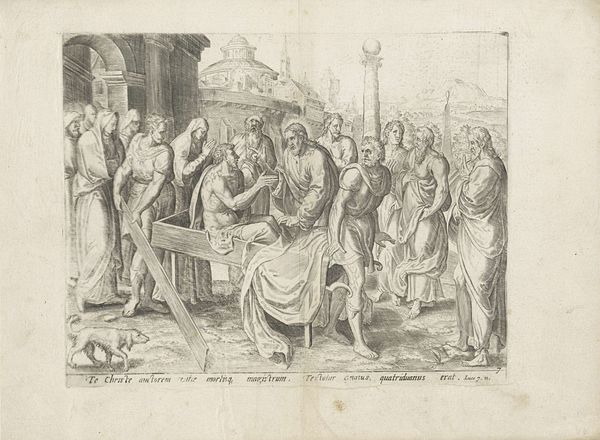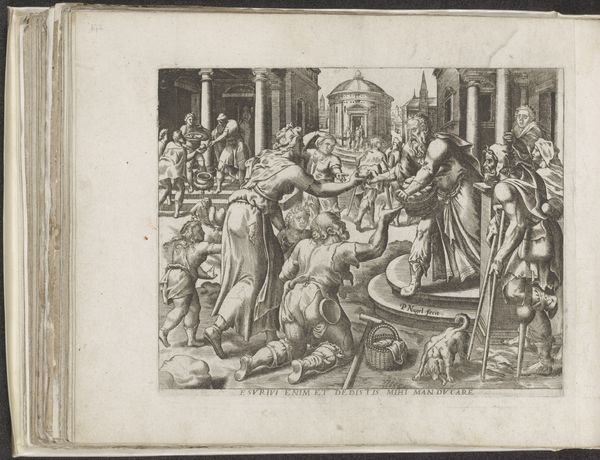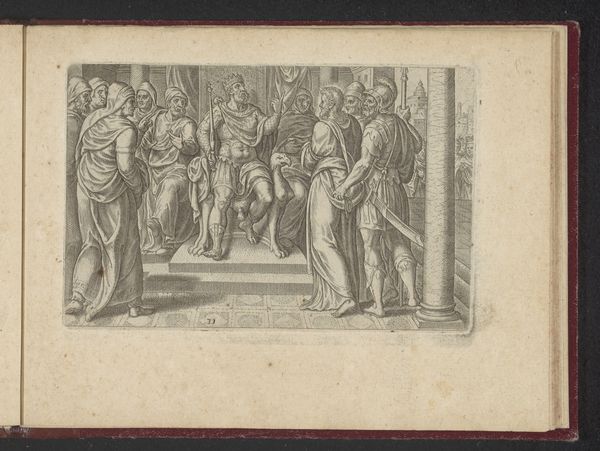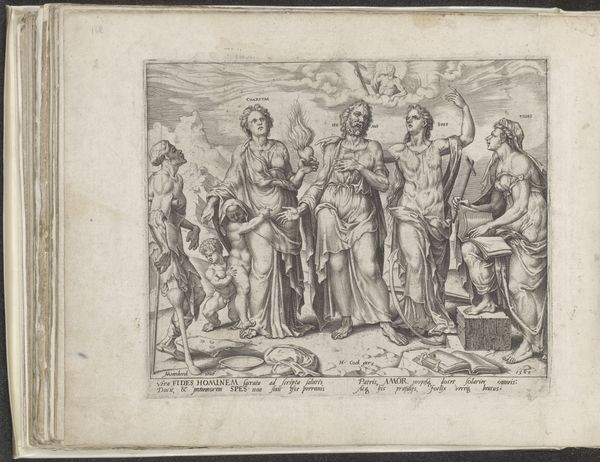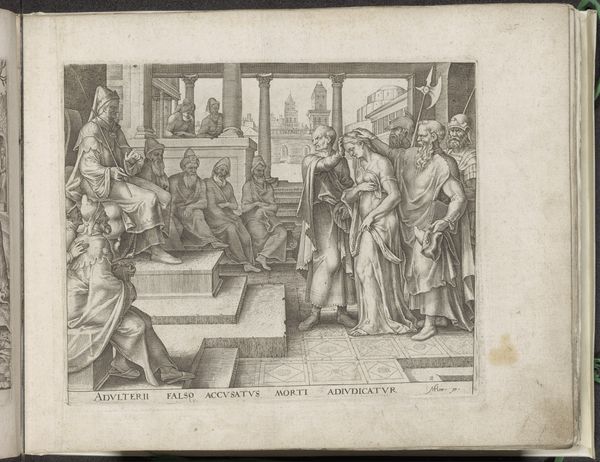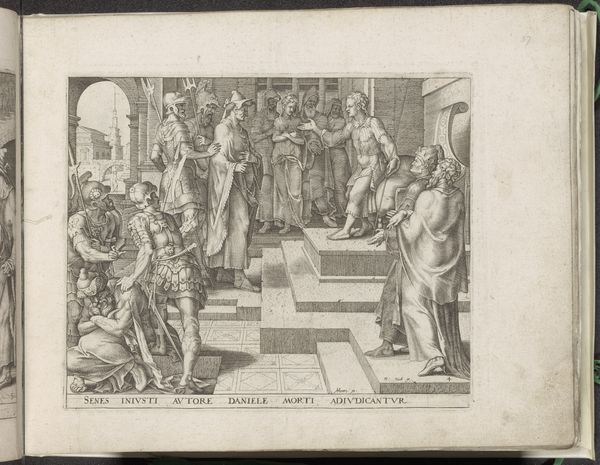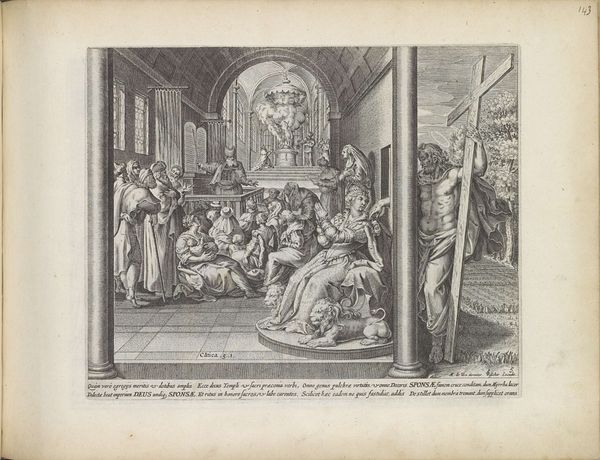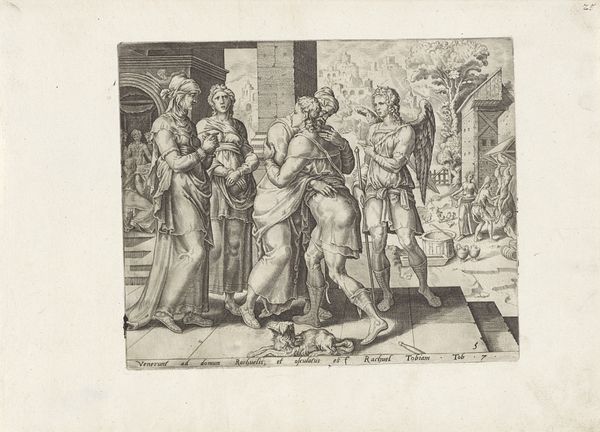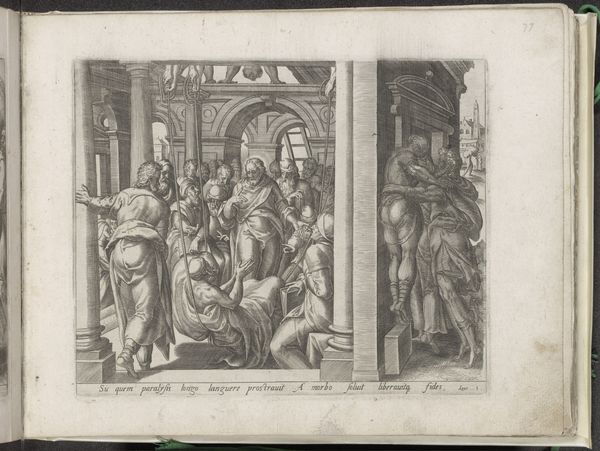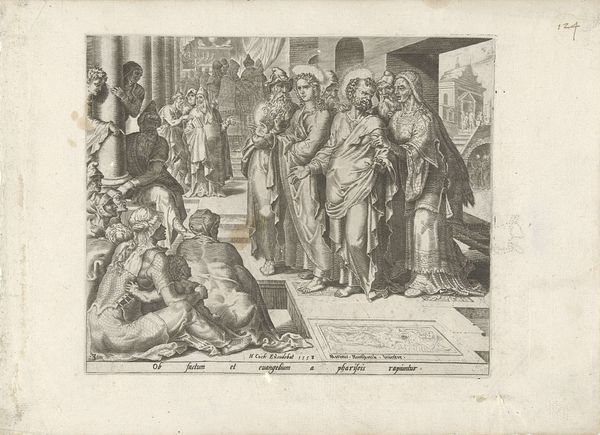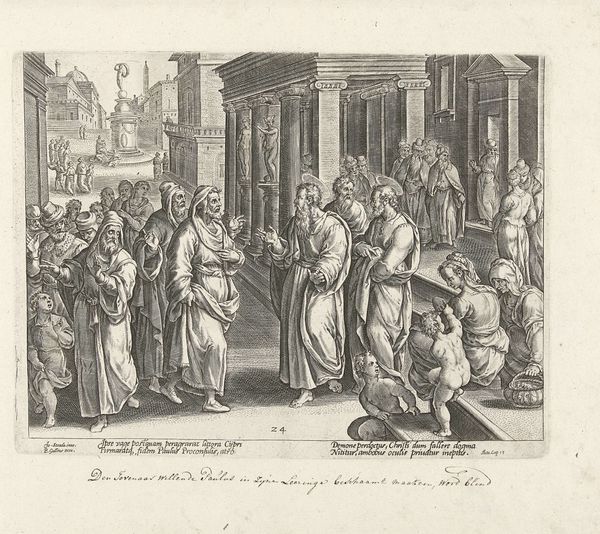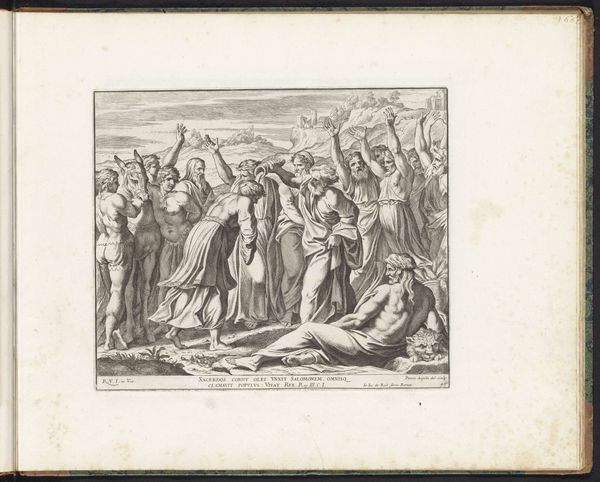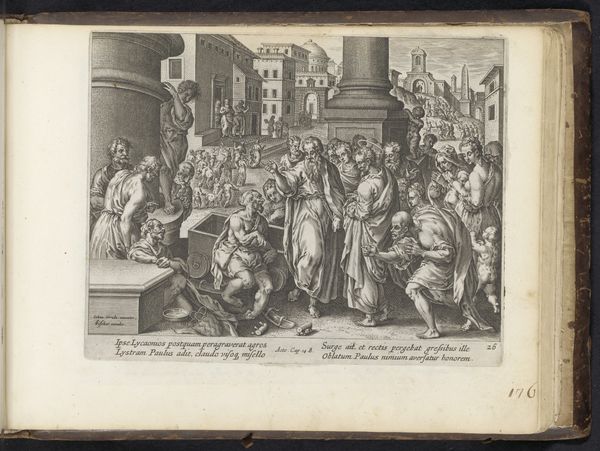
print, paper, ink, engraving
#
toned paper
#
narrative-art
# print
#
pen sketch
#
sketch book
#
perspective
#
figuration
#
paper
#
11_renaissance
#
personal sketchbook
#
ink
#
sketchwork
#
ink drawing experimentation
#
pen-ink sketch
#
line
#
pen work
#
sketchbook drawing
#
history-painting
#
sketchbook art
#
engraving
#
realism
Dimensions: height 208 mm, width 261 mm
Copyright: Rijks Museum: Open Domain
Curator: Ah, what strikes me first is this incredible stillness, despite all the people. It’s as if the air itself is holding its breath. Editor: That’s a fascinating reaction. We’re looking at "Opwekking van de zoon van de weduwe uit Naïn," or "The Raising of the Son of the Widow of Nain," a print made with engraving in the 1570s by the workshop of Wierix, and currently residing here at the Rijksmuseum. Tell me more about that stillness you perceived. Curator: Well, for me, there is something dreamlike about it; look at the lined details which make it seems so realistic. But look again. Despite that realism and clarity in details, each figure is fixed, their gaze focused. There’s a certain hush suggested by the composition. Editor: I can appreciate that observation. Formally, the arrangement of figures, receding into the background, creates depth, but the details—the faces, the drapery—are rendered with equal intensity, which might flatten the perspective and heighten the sense of compressed space, of figures bound by their emotions and that holy moment depicted. Curator: Bound, yes! Exactly. It's as though the grief, or the hope, is a tangible force holding them there. You know, it's funny, seeing this today, it really brings to mind what is grief made of? How is that heavy sensation transformed? How would you describe the engraving to our audience in other terms? Editor: Well, it’s fascinating to consider the perspective techniques used by Wierix. I’m struck by how the lines create form, almost sculptural in their effect. And, while religious narratives were common, his choices amplify the story, through the figures depicted: a body is being prepared for its inhumation into an open wooden coffin, with the lamenting crowd around. But Christ, the savior is present, making a gesture to resurrect life back into it. It brings the audience closer to understanding, perhaps, an old tale by the help of Renaissance pictorial traditions. Curator: Right, right. It feels very intimate, and yet, it tells of grand-scale events of mourning and miracles, almost touching upon philosophy and existential reflections about life. Looking at it again with your framework, it invites meditation about past beliefs and knowledge through art and spirituality. I always discover something new looking at it. Editor: Indeed. The power of formalism offers another layer to approach narrative-based art that connects us to the artistic decisions within that moment, even within a smaller print such as this, which holds within it, big wonders and life mysteries.
Comments
No comments
Be the first to comment and join the conversation on the ultimate creative platform.
